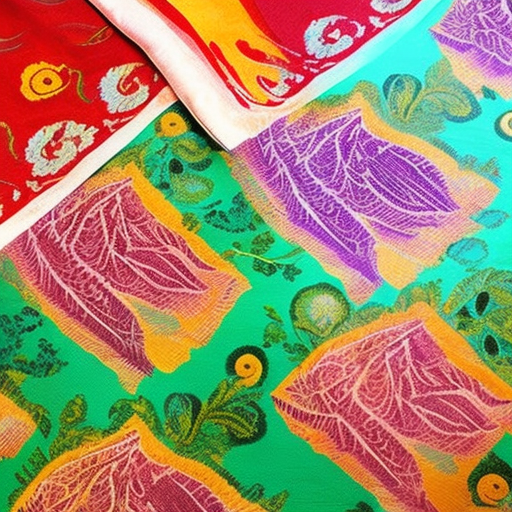Silkscreen Printing: A Comprehensive Overview
Silkscreen printing, also known as screen printing or serigraphy, is a versatile and widely used technique for transferring ink onto various surfaces. It involves creating a stencil, usually made of fine mesh stretched over a frame, and then using a squeegee to push ink through the stencil onto the desired material. This method allows for precise and repeatable prints, making it popular in both commercial and artistic applications.
History and Development
Silkscreen printing has a long history that dates back to ancient China, where it was used to print intricate designs on silk fabrics. The technique then spread to other parts of Asia and eventually reached Europe in the 18th century. However, it wasn’t until the early 20th century that silkscreen printing gained popularity as an artistic medium.
The Process
The silkscreen printing process involves several key steps. First, a design is created on a transparent material, such as film or vellum, using opaque ink or a photosensitive emulsion. This design is then transferred onto the mesh screen, which has been coated with a light-sensitive emulsion. The screen is exposed to light, hardening the emulsion in the areas not covered by the design.
After the exposure, the screen is washed with water, removing the unhardened emulsion and leaving behind a stencil. The stencil is then dried and attached to a frame, creating the printing screen. Ink is applied to one end of the screen, and a squeegee is used to pull the ink across the screen, forcing it through the open areas of the stencil and onto the material below.
Applications
Silkscreen printing is widely used in various industries, including textiles, advertising, and packaging. It is commonly used to print designs on t-shirts, posters, banners, and other promotional materials. The technique’s ability to produce vibrant colors and durable prints makes it a popular choice for mass production.
In the art world, silkscreen printing has been embraced by many renowned artists, such as Andy Warhol and Roy Lichtenstein. These artists used the technique to create bold and iconic images, often incorporating multiple layers of color and texture. Silkscreen printing allows artists to reproduce their work in multiples, making it more accessible to a wider audience.
Advantages and Limitations
One of the main advantages of silkscreen printing is its versatility. It can be used on a wide range of materials, including paper, fabric, glass, metal, and plastic. The technique also allows for precise registration, meaning that multiple colors can be printed on top of each other with great accuracy.
However, silkscreen printing does have some limitations. It can be time-consuming and requires specialized equipment and materials. The process is also not suitable for highly detailed or complex designs, as the fine mesh of the screen may not capture all the intricacies. Additionally, each color in a print requires a separate screen, which can increase production costs for multi-color prints.
Conclusion
Silkscreen printing is a versatile and widely used technique for transferring ink onto various surfaces. Its long history and development have made it a popular choice in both commercial and artistic applications. The process involves creating a stencil on a mesh screen and using a squeegee to push ink through the stencil onto the material. Silkscreen printing offers advantages such as versatility and precise registration, but it also has limitations, including the need for specialized equipment and the inability to capture intricate details. Despite these limitations, silkscreen printing continues to be a popular and influential medium in the art and design world.












